Our Lady of the Cape Shrine: A Spiritual Treasure in Trois-Rivières, Quebec
Explore the rich history of Our Lady of the Cape Shrine, a top pilgrimage site in Quebec known for its miracles, stunning architecture, and faith.
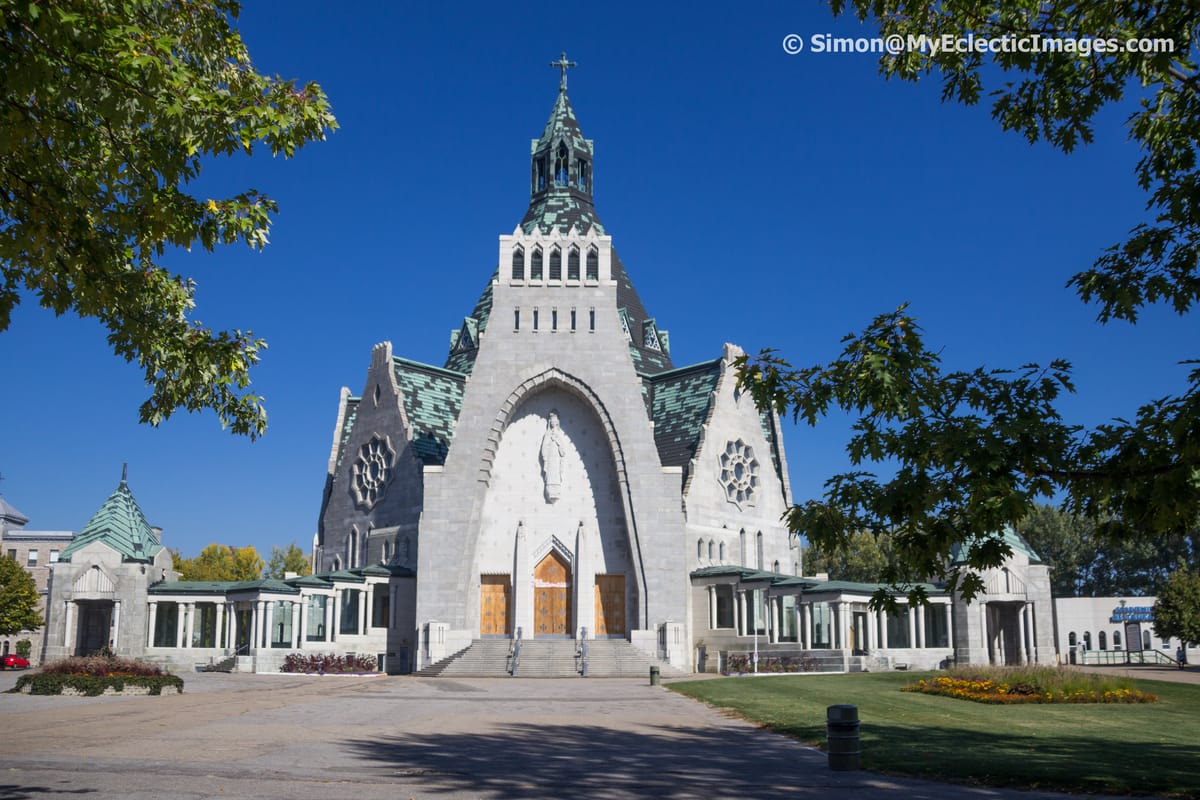
The History of Our Lady of the Cape
Casually dressed in an open-neck shirt and slacks, Father Bernard Menard looked more like someone’s kindly grandfather than a priest. His handshake was soft and warm, his voice gentle and kind. Father Menard was our guide during our visit to Our Lady of the Cape Shrine in the city of Trois-Rivières, halfway between Quebec City and Montreal.
We sat enthralled as he recounted the history of Our Lady of the Cape. It was a tale of faith, miracles, and perseverance, which culminated in a small chapel becoming a draw for hundreds of thousands of pilgrims from around the world.
The chapel, as well as a modern basilica, is located in the district of Cap-de-la-Madeleine, where, a small, simple wooden church was erected by French settlers in 1659. This was the first church of Cap-de-la-Madeleine.
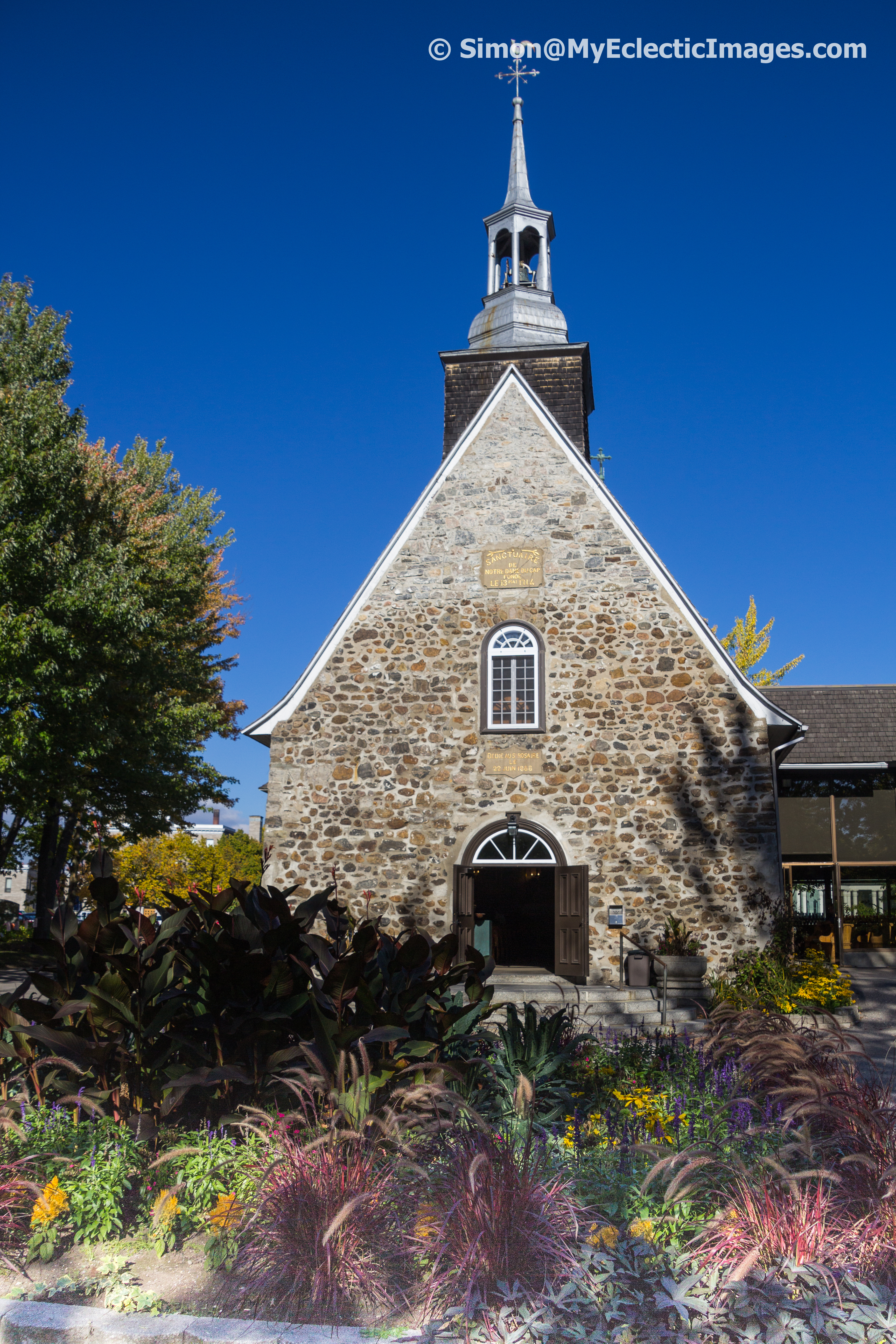
The second church, constructed of fieldstone, opened its doors in 1720. Known today as the Old Shrine, it is the oldest church in Canada where daily Mass is celebrated.
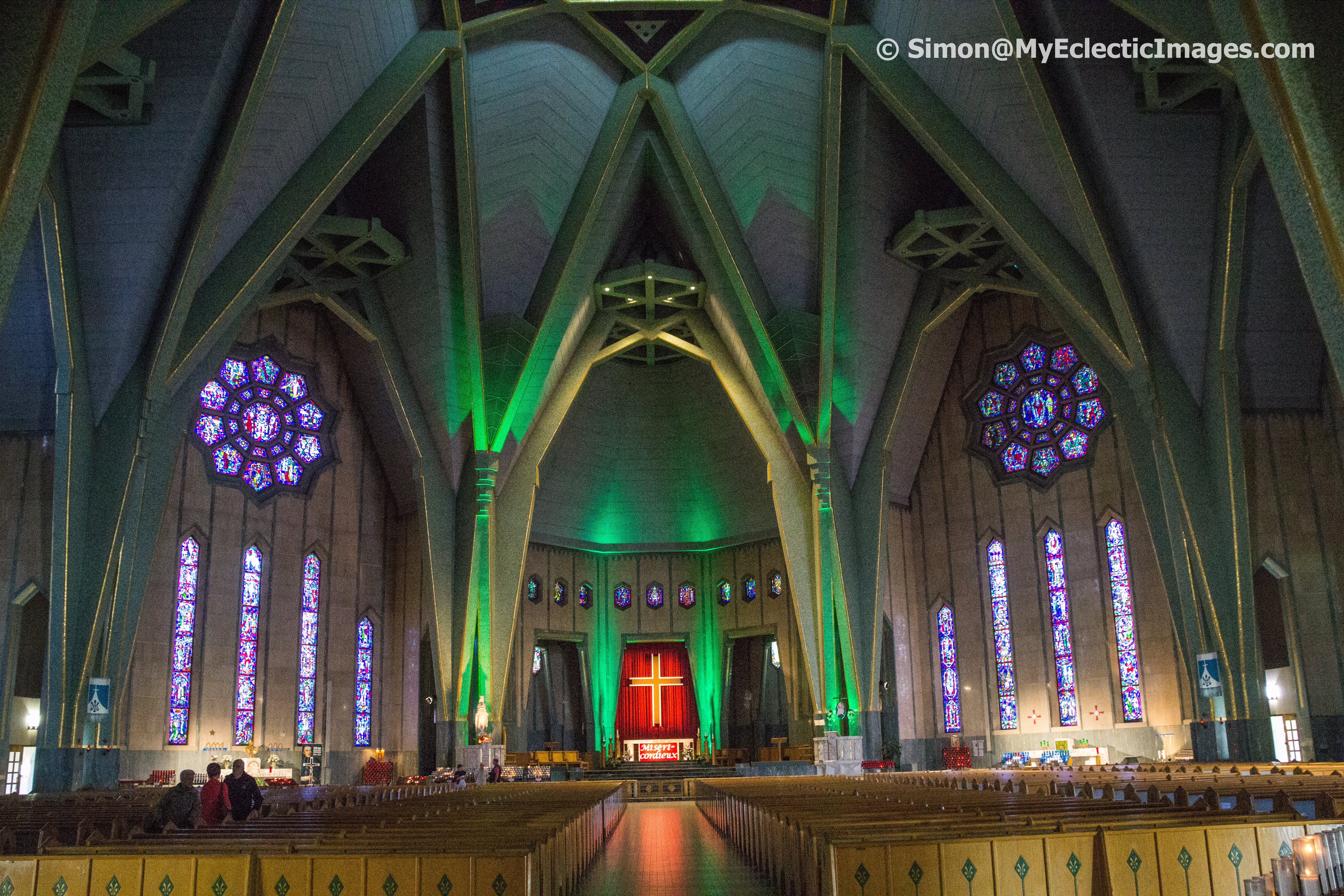
Father Menard told of how the church had declined in membership, then grew to the point where a larger church was needed. It was in the winter of 1879 the first of two miracles occurred.
The First Miracle
It had been an unseasonably warm winter, and the ice bridge upon which supplies were brought from across the St. Lawrence River didn’t form. The hope had been to begin work on the church in the summer of that year, but the stones required for the construction could not be transported to the parish.
The population prayed day and night, and on March 15, large patches of ice began forming a narrow bridge in one critical spot, while the St. Lawrence remained clear on either side. Parishioners worked feverishly to shore up the ice with water and packed snow. For six days, beginning March 19 sleds were able to bring stones across “The Rosary Bridge” to the parish.
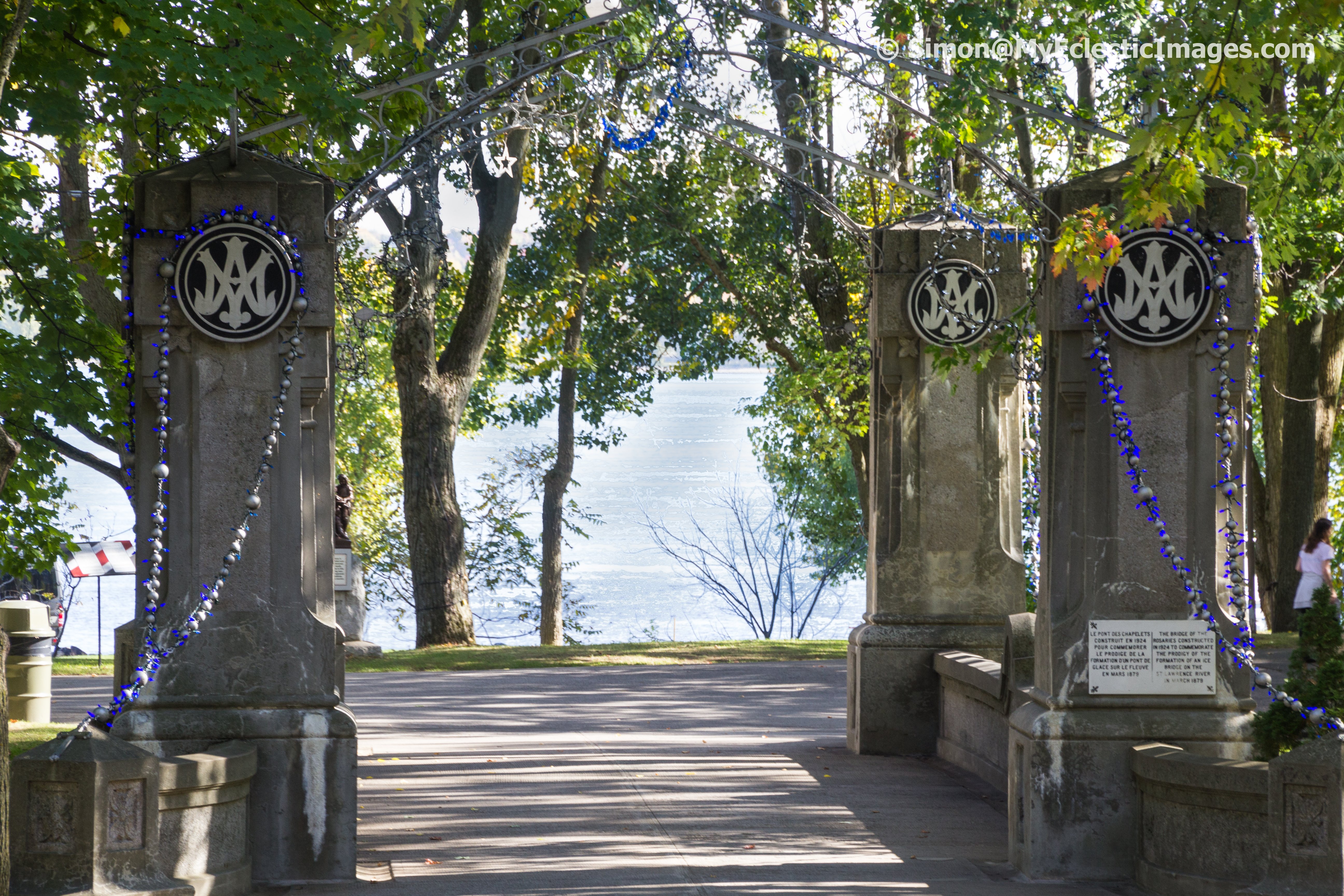
Father Menard said although the task of transporting the stones on horse-drawn sleds was perilous, the parishioners insisted they were not afraid, because they felt protected. Just after the last load had been safely brought across, the ice bridge collapsed.
A Second Miracle
The second miracle occurred on June 22, 1888, the date the extension to the original stone church was dedicated, to Mary. Her five-foot statue was moved from its alcove to rest above the altar, where it still resides.
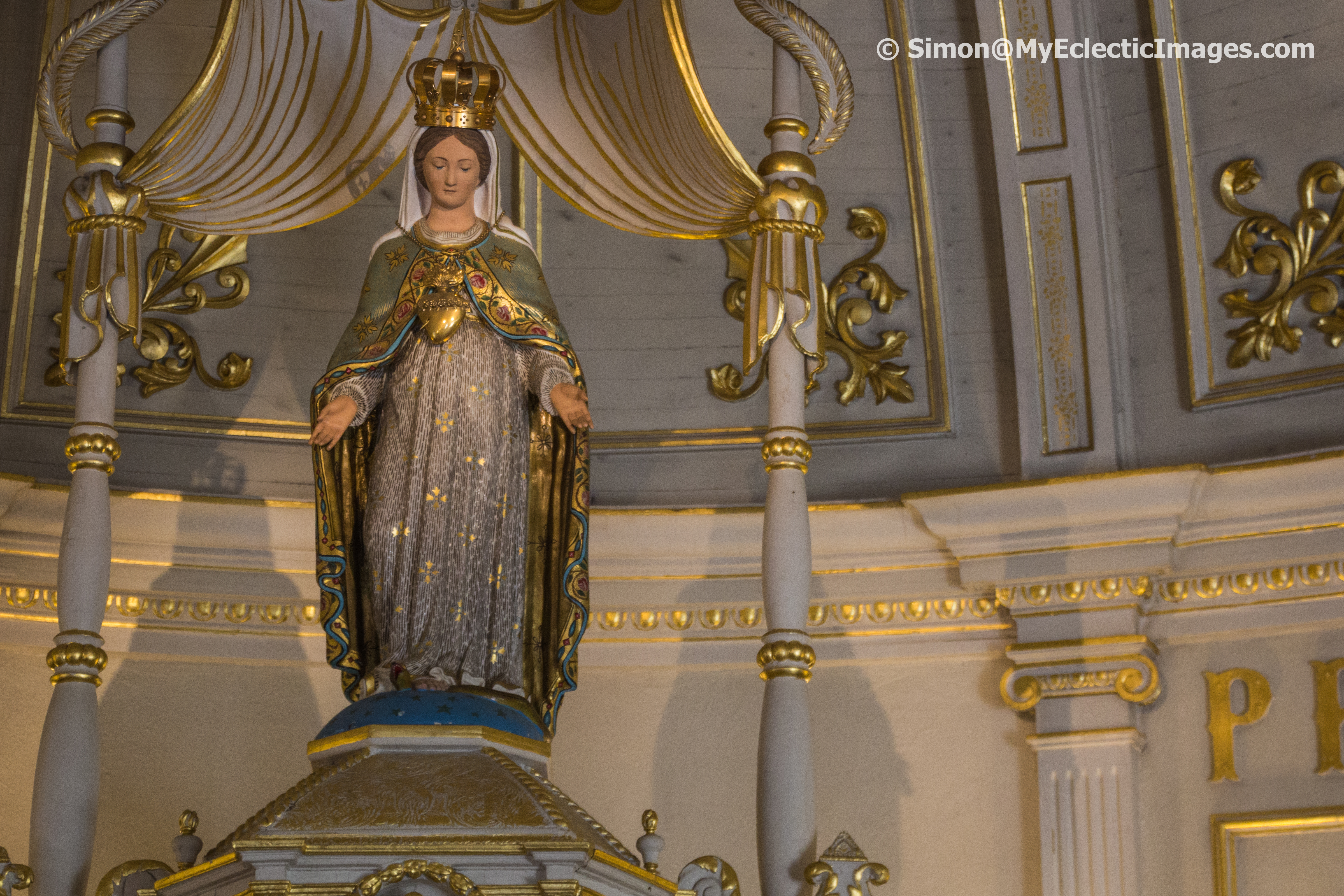
Following the celebration dinner, a man in a wheelchair requested permission to pray to Mary in the shrine. He was accompanied by the priest and Father Frederic, a Franciscan priest, visiting from the Holy Land. Each man testified he saw the lowered eyes of the statue open wide, and gaze out at the world for several minutes with a look of true compassion.
Father Frederic, who had planned to stay for three weeks remained another 14 years. He became the church’s first pilgrimage director, and was declared blessed by Pope John Paul II on September 25th, 1988, one hundred years after the miracle of the opening of the eyes of the statue of Mary.
The Shrine Today
Today, between 200,000 and 400,000 pilgrims visit Our Lady of the Cape Shrine annually. Many come to celebrate the Festival of the Assumption on August 15. This also happens to be Father Menard’s birthday.
With Father Menard’s haunting story fresh in our minds, we strolled the grounds, taking in the statues and gardens. Across the Bridge of the Rosary, symbolizing the 1879 miracle was a garden displaying statues representing the Stations of the Cross. A peaceful sanctuary, this space is ideal for walking and reflection.
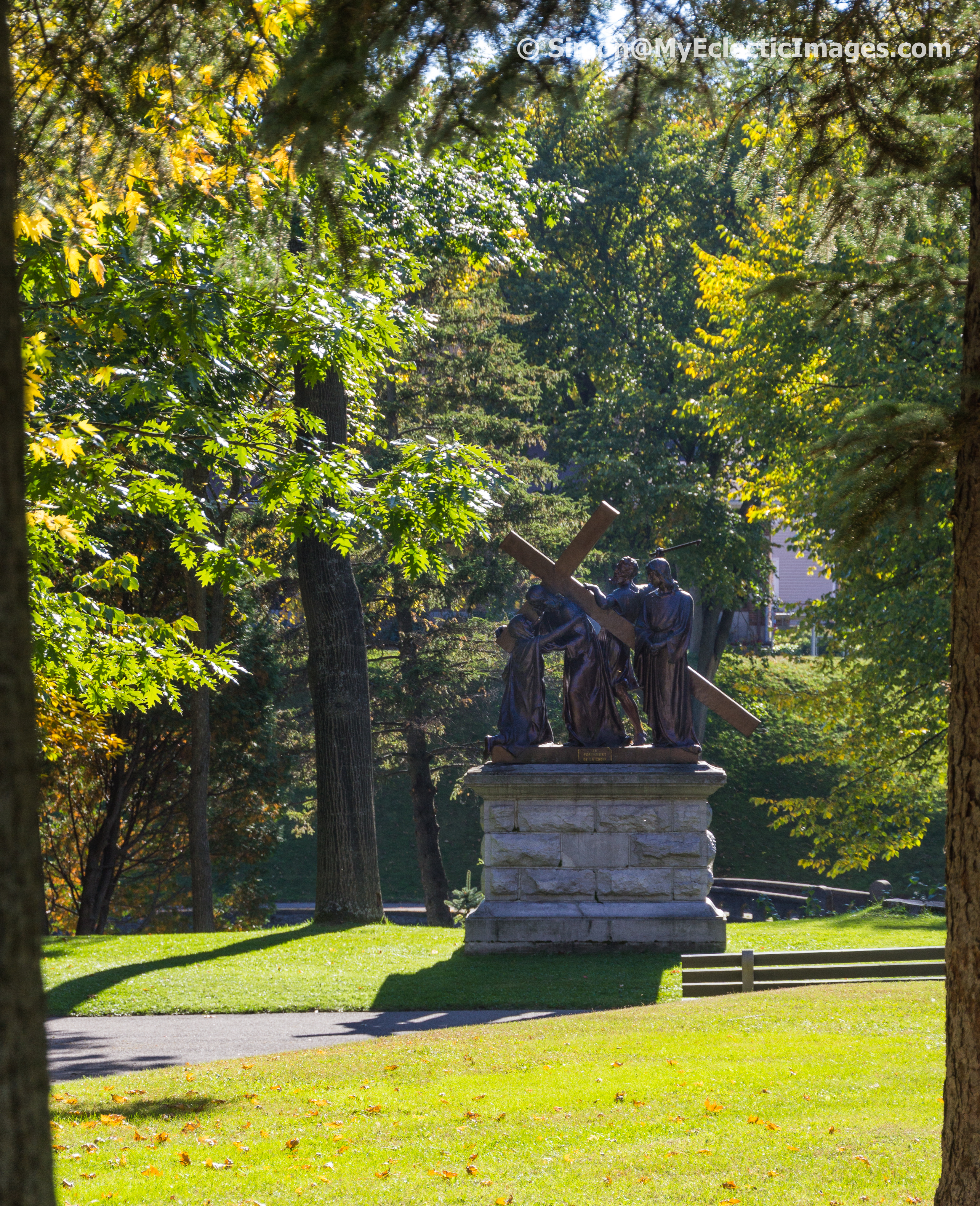
We also stole quietly into the shrine to witness people silently praying to the Statue of Mary. It now stands above the altar with open hands and lowered eyes.
Notre-Dame-Du-Cap Basilica
From there, we entered Notre-Dame-Du-Cap Basilica, where magnificent stained glass windows and one of the largest Casavant organs in the world awaited our admiration. The breathtaking stained glass windows are credited to Father Jan Tillemans, a Dutch priest with as much talent as devotion.
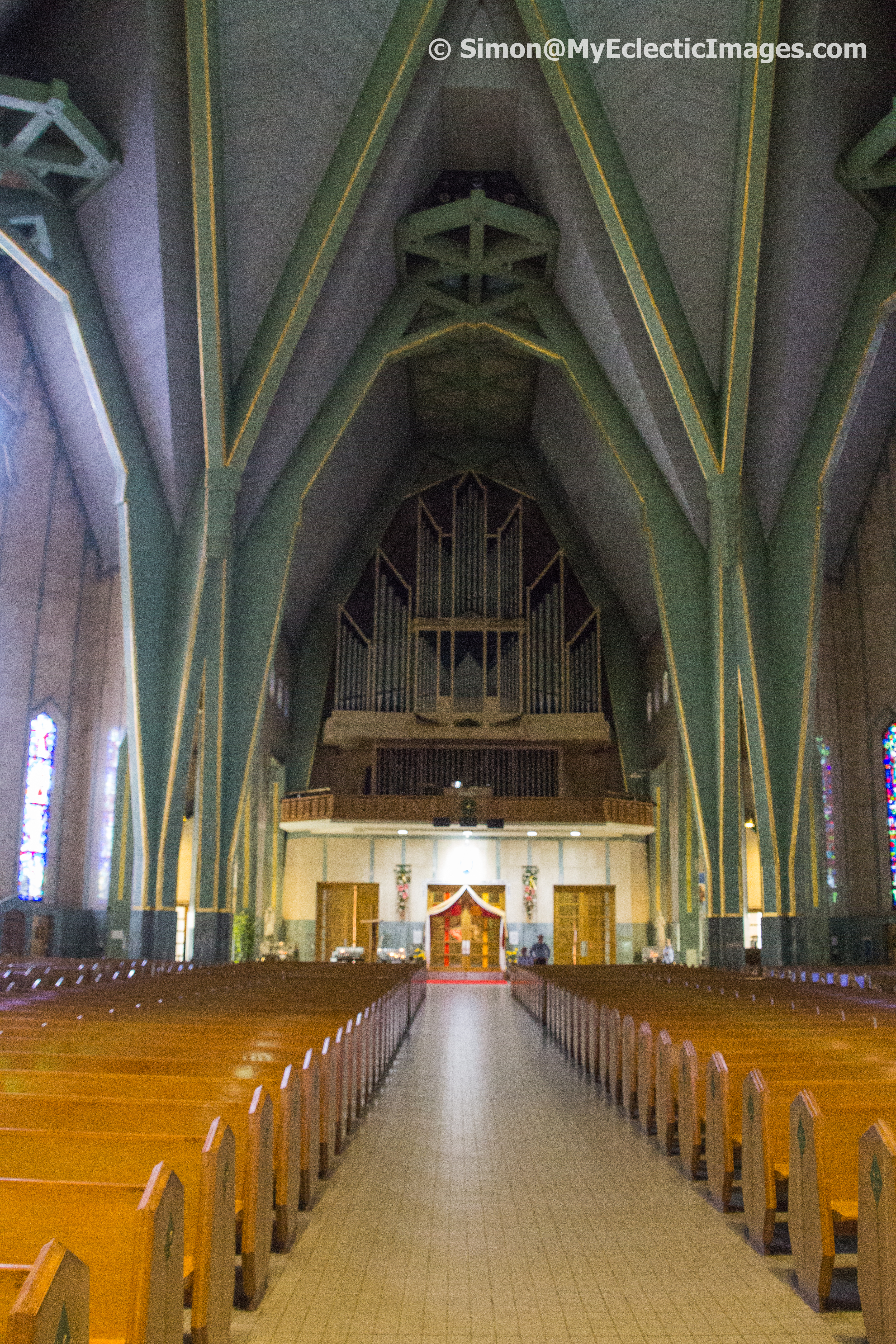
The colors in the glass are produced from ground stones. The windows are mounted using techniques that have been around for centuries.
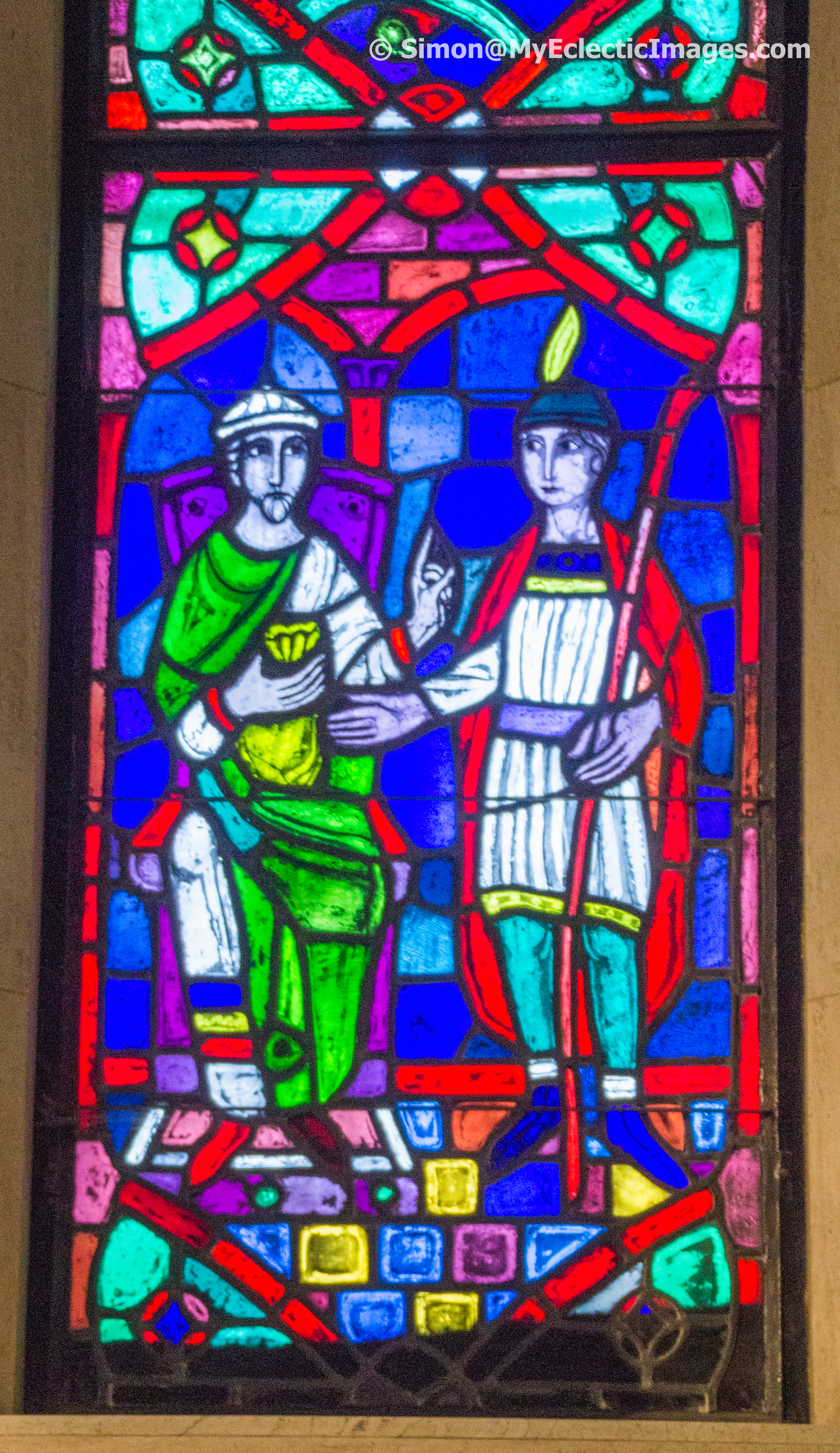
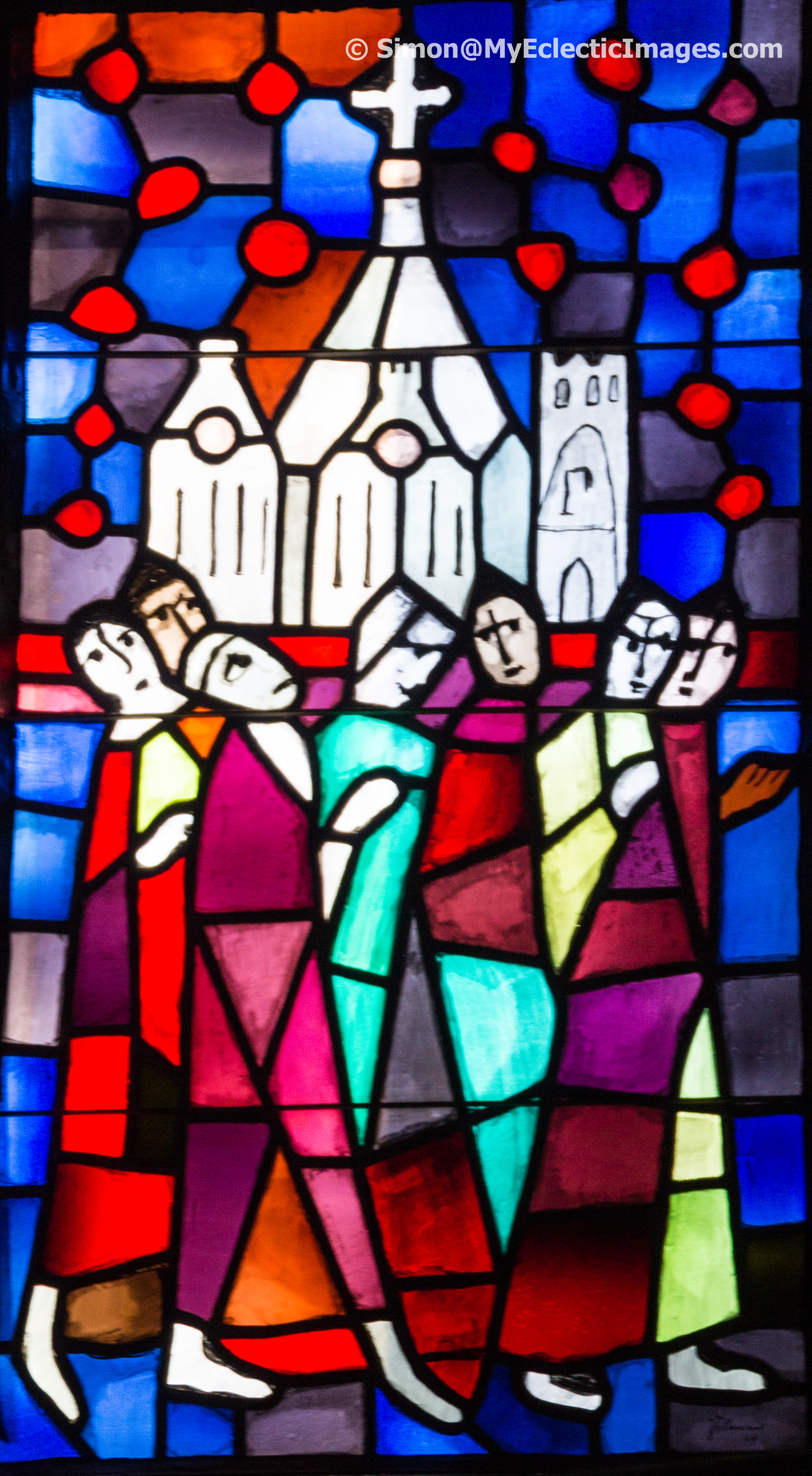
The basilica, using design features of a First Nation teepee, soars to a height of 125 feet and can accommodate up to 1,660 worshipers.
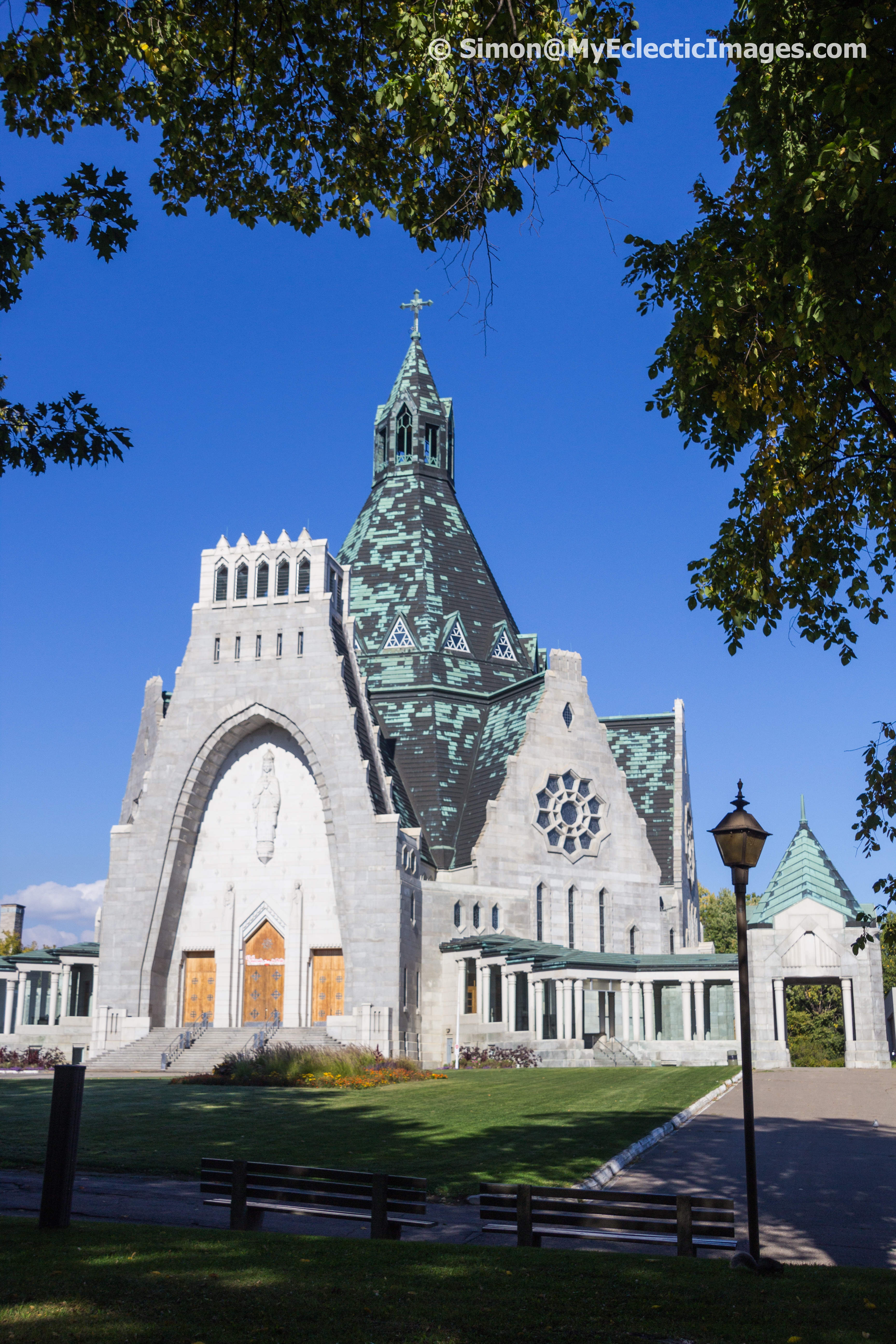
Whatever your religious affiliation (or lack there of) opening yourself up to the beauty and solemnity of Our Lady of the Cape Shrine is a deeply personal experience. It doesn’t matter if you believe in miracles. The people of Cap-de-la-Madeleine did. And that does matter. It was their unshakable faith that enabled Our Lady of the Cape to flourish and grow into an international magnet for the faithful and the fascinated.
Disclaimer: During our visit to Trois-Rivières, we received assistance from Innovation et Développement économique Trois-Rivières, as well as a media rate from Gouverneur Hotel. However, all opinions, as always, are entirely my own.
For more information on Trois-Rivières, read 24 Hours in Trois-Rivières, Quebec on MilesGeek.




